Stopped in the middle of one bridge to do this shot of another, early morning Monday on the way home.
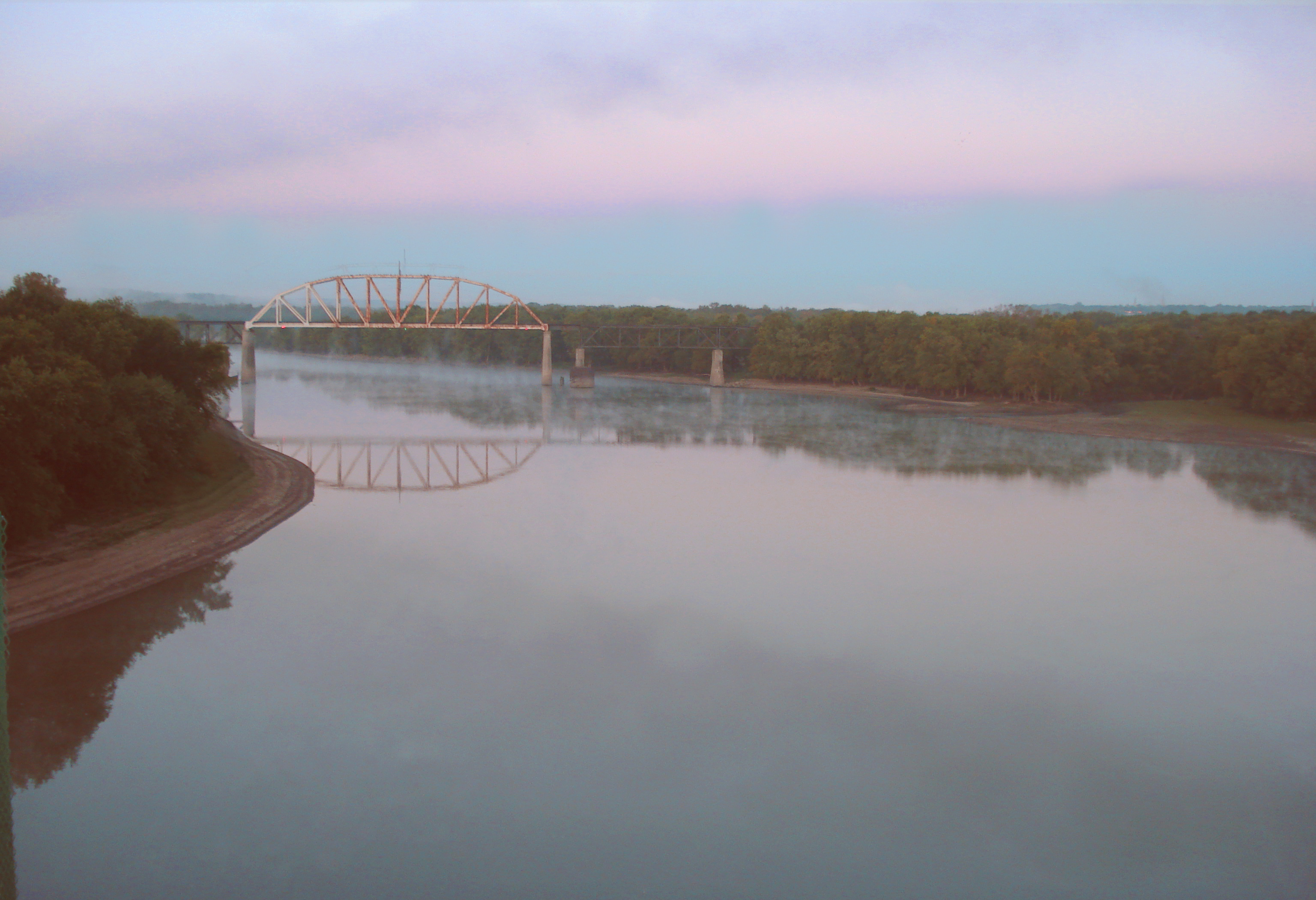
Stopped in the middle of one bridge to do this shot of another, early morning Monday on the way home.

I had to call a friend to help me set up to scan slides. It was literally a matter of not having something plugged it. No, I don’t mind admitting “Doh!” moments. Learning is filled with them, embarrassment shouldn’t prevent sharing of knowledge.
Anyway, the scanner works for color transparencies now and I have a mother butt load of them in the closet. Thousands upon thousands. At least half of them are Kodachrome.
So I began with a couple on hand and started playing. One I did this morning I have worked up into two versions. Here’s the first.
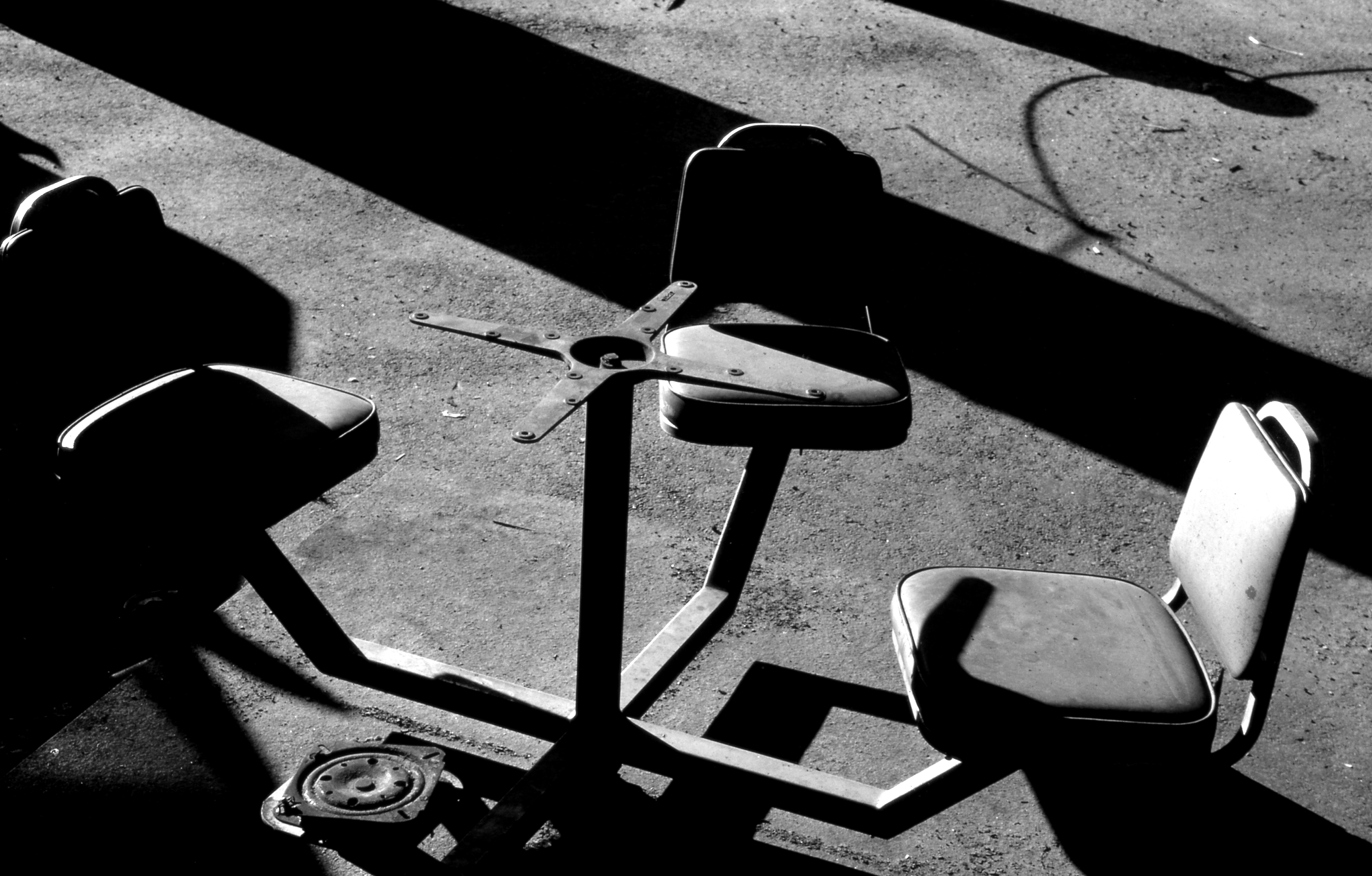
Yes, I said and you read correctly that this is from a COLOR transparency. But it was shot late in the day and was pretty monochromatic, all browns and yellows and hints of red. I thought it would make a better black & white image and it is pretty dramatic. (I just desaturated it in Photoshop, played with the contrast, etc.)
But I thought it had a bit more potential. A photographer I used to admire was Pete Turner, who developed a style of intensely monochromatic images often with one variant color. I always liked the idea, but the best I could do from what I worked with (unless I lucked into a shot that was basically all one color) was to hand tint black & white images.
Well, Photoshop allows me to indulge it and do it a bit better. Hence—
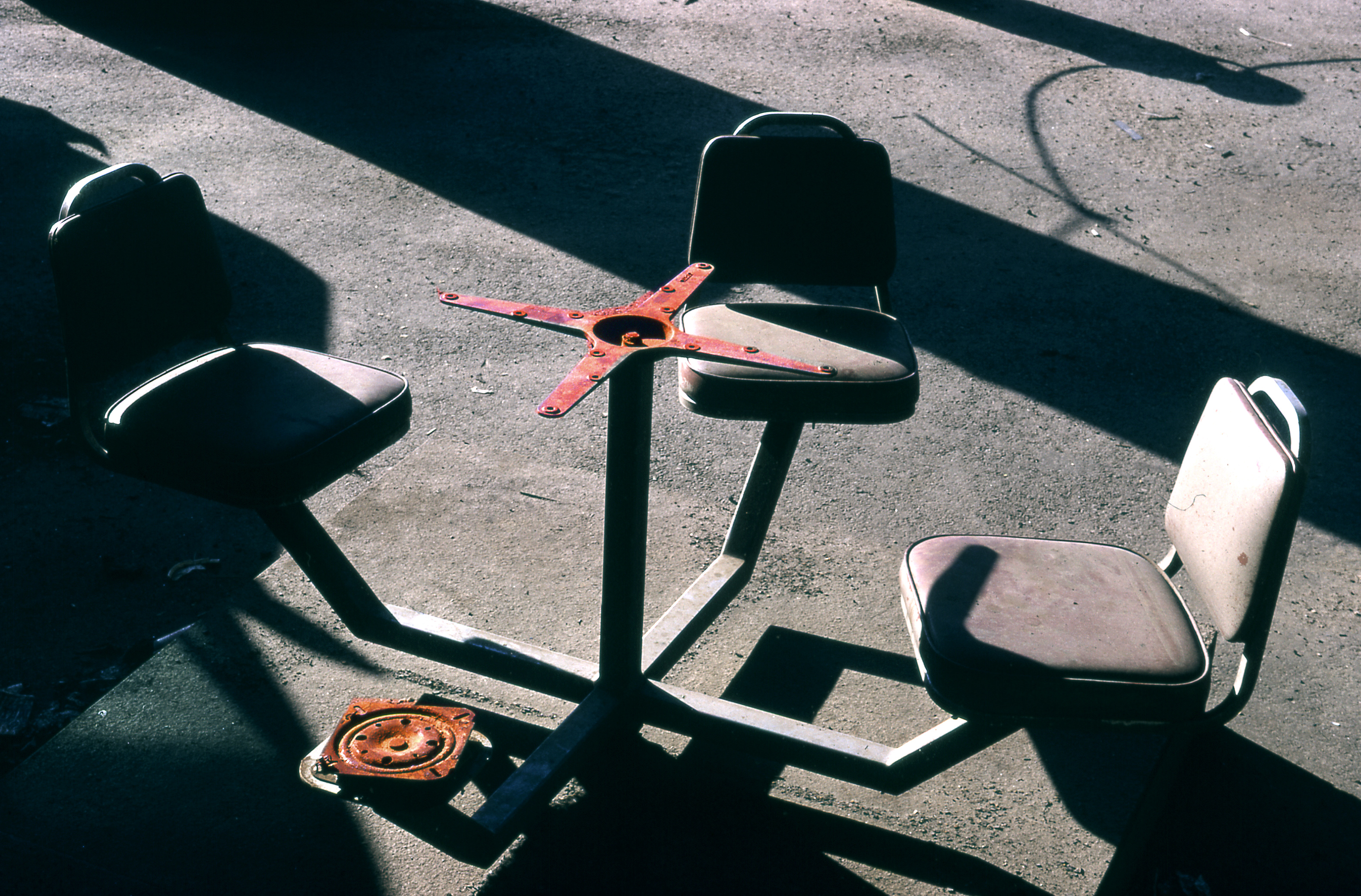
This is now my preferred version. I isolated the two brightly color areas, oversaturated them, and then drew down the saturation over all. I didn’t quite manage it right to get a completely black & white overall image, but this has some charm I quite like.
Anyway, both images will appear in my Zenfolio portfolio. A fun morning’s work.
Enjoy the weekend.
Steve McCurry, a famous photographer whose image of an Afghan girl with brilliant green eyes for National Geographic has become iconic, has been given a great and sad gig—Kodak has handed him the last production roll of Kodachrome to take and shoot. He’s doing it in grand style, traveling all over the world, with a film crew shooting a documentary about it.
I wanted to be a photographer for National Geographic when I was a teenager. I knew nothing about how to do that, and for numerous reasons I won’t go into I never found out or took the chance. I played it safe with a nice steady lab job and didn’t pursue a dream. Oh well.
But I have nevertheless made some images of which I am very proud. Here’s one:

I just finished Photoshopping this and doing some work on it to make it more what I wanted it to be. There are reasons for the abandonment of film, yet I feel sad. Kodachrome had a special look and it was for a long time my favorite film. The idea that Kodak won’t be making it anymore—or any of its other films—is just too weird to me. I remember when they purged their paper line. They once made dozens of types of photographic paper (b & w) in a variety of surfaces and in the mid to late 70s they discontinued 90% of them. The market was changing, resin coated paper was becoming popular, sales flagged on the harder-to-use fibre papers…
Still, it’s a loss. I will be very interested to see what Mr. McCurry does with that final roll. Meantime, like most of the rest of us, I’m learning to do this digitally.
Gotta say, it has possibilities for me that are very seductive.
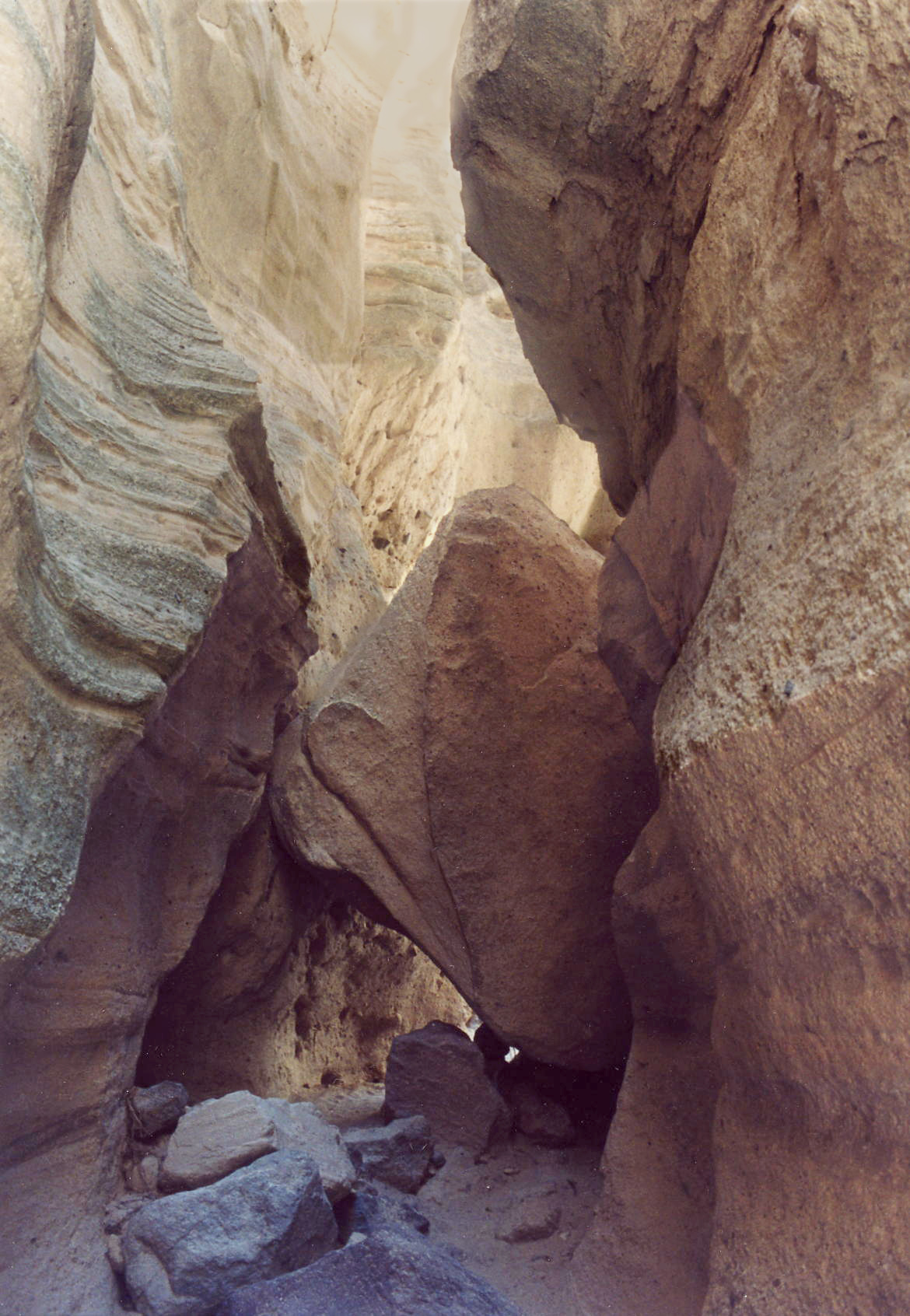
Both images were shot in New Mexico.
A friend of mine, the estimable Erich Veith, came by my home a bit over a year ago and we recorded a long interview. Erich has finally gotten around to editing it and has begun posting segments on YouTube. Here’s the first one. (I still haven’t figured out how to embed videos here, so bear with me.)
Erich runs the website Dangerous Intersection, where I post opinionated blatherings from time to time and Erich graciously allows me to hold forth in my own idiosyncratic manner. Why he thought people would also enjoy watching and hearing me as well, I can’t say, but I enjoyed the process and from the looks of the first three (which are up at Dangerous Intersection) I don’t think I came off too badly.
The one thing that has puzzled me about Erich these past few years is, where does he find the time to do what he does? I mean, he’s a lawyer, for one thing. He has two daughters his wife and he are raising. He’s a musician who occasionally gigs. And he runs this website, which is quite large and has a lot of traffic, and would seem to me to be just a lot of damn work. If you haven’t spent some time there, do. In my experience it’s unique and I’ve enjoyed being a small part of it.
My thanks to Erich for the opportunity to play at celebrity just a wee bit. I hope others enjoy the results.
Given the subject of the last post, I feel this is appropriate. Add a little light to the dark.
Tomorrow—June 23—is the 15th anniversary of the closing of Shaw Camera Shop. I was there on the last day (and at least one day afterward) and saw it shut down.
I grew up there.
As I’ve noted, I became interested in photography when I was fifteen. Dad gave me his vintage Canon rangefinder, bought me a small lab—Acura enlarger, a few trays, tongs, mixing bottles, a plastic film developing tank, a safelight—and I was off. Interestingly, I now recall, we bought all the darkroom stuff at, of all places, Famous-Barr. They had a complete photographic department then.
Soon after I began making my first messes, photographically-speaking, we started hanging out at Shaw Camera. It was close and had more goodies than the other close one, Jefferson Camera. Besides which, we almost immediately took a liking to Gene and Earline.
Physically, it filled the ground floor of a large two-story building near the intersection of Shaw and Vandeventer. The corner building contained a liquor store—Bus Stop Liquors. Catecorner across Vandeventer was Irv’s Good Food, which was immortalized in Glenn Savan’s novel, White Palace. It was the classic greasy spoon diner. The cook was an ageless fellow right out of a Woody Guthrie world named Earnie. On the other two corners were gas stations, one of which closed down (the one directly across the street from the Shop) before I started working there.
It was also right up the street from Missouri Botanical Gardens, which became a major customer.
The neighborhood was old and, as they say, “in transition”, so for years it was a mix of urban yuppie and down-and-out Section 8. Highway 44 was visible from the front window.
The store part was bright—a long counter that turned in an L about midway in, with glass cabinets behind a central rack on which were photofinishing order envelopes, the phone, various catalogues, right next to a counter containing the bins for finished work and the cash register. The back half contained two rows of shelf space on which one found supplies of all sorts. When I first walked in there, it was a cornucopia of cool stuff. If you wanted to start up in photography—the whole thing, shooting and printing—Shaw was the place to go.
Along the right-hand wall, midway, you came to an alcove. A door within opened to another large space which housed their collection of cameras and other assorted collectible equipment. (The collection was world class and included an all-mahogany 8 X 10 view camera from the 1880s. It drew the attention of serious collectors, including once Martin Barre of the band Jethro Tull, who wanted to buy it outright. Earl wouldn’t come down enough for him, though.) This room had three corked walls. One was taken up with a white background against which Gene shot passport pictures. The other two were used to hang pictures.  Customers could display their work.
Proceeding down the center aisle, back in the main shop, you reached a wide access that could be barred by a heavy accordion steel gate. They’d been robbed once. Bad enough that the thieves stole camera from the shop, they had gone back into the lab and opened every single box of paper, exposing it all, putting the shop in serious trouble. The cameras were insured, the material wasn’t. The small area immediately through this access contained the lunch counter and the copy stand. To the right were two doors—one to the bathroom, the next to the office.
To the left was another wide access, which led to the lab space.
The building had once been a bakery, so this entire back area was done in polished white brick. (A great uncle of mine had actually worked in the bakery, in the 20s.) A separate room had been built square in the center of this huge space, and inside that room was the darkroom. Three enlargers, standing alongside tray set-ups. Everything was done by hand. No automated printing machines at all.
At one time this section had been leased out to a film sound-striping operation, wherein the sound recording part of movie film was added to raw film. This was a separate business from Shaw. Part of the chemistry these folks used was carbon tetrachloride. They spilled some one day—a whole bottle. They took their time cleaning it up and the fumes drifted into where Earl was working. At that time she wore contact lenses. The carbon tet vapors his the lenses and shattered them. Earl had no corneas after that and when we knew he she wore very thick glasses through which her eyes looked truly weird. That she could see at all was amazing, that she could see as well as she could defied reason. The film-striping company was asked to leave after that.
Just for reference, here is an old photograph from a newspaper article about the shop and Earline, from 1964.
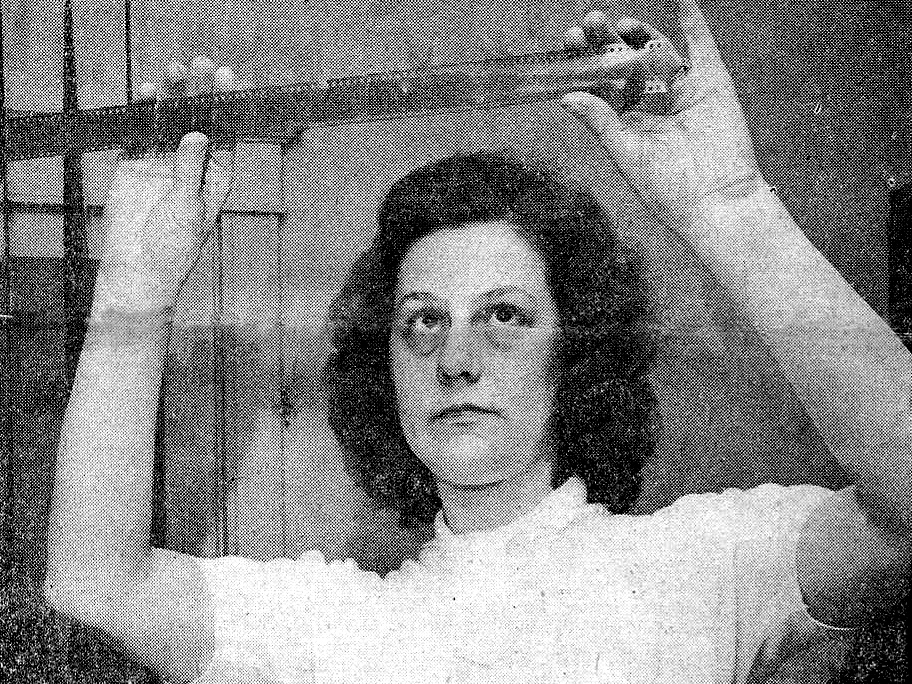
This was before I knew her and before the accident.
I went to work for them in 1972 as part of the first Distributive Education program at my school. Actually, it was before that, in the summer. I’d hoped to keep the job all that year. But I was a terrible employee. At 17, I simply didn’t know what I was supposed to do. Not the lack of training, that was a given. But the idea of holding a job, of being a self-starter, of being responsible—I didn’t get it. So they fired me. I deserved it.
I had three more jobs between then and when they rehired me in January of 1976. By then I’d figured out how to be an employee and Earl took a second chance on me. Apparently it paid off, because I worked there until June of 1995.
Most of our work at the time was custom. Fine prints for particular people. We did only black & white. Color work we jobbed out and we had a couple of labs for that, most of which are gone now. For the amateur photofinishing there was Rainbo Color. Custom transparencies, Master Slide. They later added custom prints as well. Eventually, there was a lab that did cibachrome prints, Novacolor. And, of course, there was the Great Yellow Father—Kodak. But we did the black & white.
A couple years after I went back to work for them, we got into the yearbook business. For a few years we were printing all the work for the three largest yearbook photographers in St. Louis—Vincent Price, Hal Wagner, Lyle Ramsey (I think, memory may be playing tricks with me)—and had to add new equipment and hire new people. Earl was still lab manager, but more and more the daily management was left to me, while Gene handled all the retail.
As I mentioned before, they adopted me. When they realized how serious I was becoming about writing, Earline gave me an IBM Selectric for a Christmas present. (Later she gave us our first computer, a first-generation MacIntosh, which proved…inconvenient.) Annual bonuses were normal. Trips to the country regular.
We laughed all day in that place, even though we worked our butts off.
When I started seeing Donna and introduced her to them, they took to her immediately and folded her into the family. Donna used to ride the bus to and from her job and she got out early enough to come by the shop. She would come back at the point in the day when all the prints had to be dried. This was in the days, still, of what we used to call “real paper’—fiber-based, not resin-coated—and we used an enormous drum dryer. You’d lay a row of prints on the apron as it moved toward the polished ferrotyping drum, against which they would be squeegied. The drum, which was a good four feet in diameter, turned slowy and by the time they came round they would be dry and fall off into a tray. Donna would just come on into the back and start drying prints.
I think back to that time now and find a thick chord of nostalgia. Good times.
I worked there through an expansion that saw us making quite a bit of money. We started doing the b&w for several camera stores through Rainbo Color Lab. For a time I think we printed every black and white image sold in St. Louis. The roll-call of the stores is telling about how much has changed. Jefferson Camera, O.J.’s, Clayton Camera, Kreumenacher’s, Vazi’s, St. Louis Photo, Dicor, The Shutter Bug, Sappington Camera, Creve Coeur Camera, Schiller’s…
Of the bunch, I think Clayton Camera still exists and Creve Coeur and Schiller’s, all very much changed.
Earline had had her first bout with cancer in the mid-Sixties—uterine. When I went to work for them the second time, shortly thereafter, it came back as breast cancer. She fought that off. But then it came back again as a weird manifestation of lung cancer and that was when she began to lose. It metastisized and when it reached the brain she died. I occasionally still have dreams about her.
She’d started as a street photographer at 14. She was self-educated. When I went to work there in 1976, she was learning Russian. Just for the hell of it.
The demise of Shaw Camera Shop still causes a touch of bitterness. It didn’t have to happen. I’d offered a number of ways to change with the times, most of which, for reasons I won’t detail here but which were profoundly short-sighted and stupid, were ignored by the new owners. Little by little, customers went away and we didn’t replace them. Eventually, it just couldn’t be sustained.
Today if you go by there you’ll find it’s home to a lawn ornament/antique shop called Gringo Jones. They’ve gutted the insides, but, as I finally worked up the nerve to go through there last year, you can still see where everything was, a kind of archaeological trace. The liquor store is gone, too, but that had closed down while we were still open and was taken over by a botanical shop called The Bug Store, which is still there.
Irv’s Diner is long gone and where one of the gas stations was is now the forecourt of a research center owned by the Garden. Where the other gas station had been is a parking lot, also owned by the Garden. It’s a thriving neighborhood now.
Like many good things, I didn’t realize how much I liked working there until long after I didn’t anymore. I haven’t even touched on the wide range of characters we had for customers, a catalogue of unique people I doubtless mine in my writing. Many if not most brought smiles when they came in.
Occasionally, up on The Hill, St. Louis’s designated Italian neighborhood, you can still walk into a restaurant or a store and see a print we did hanging on the wall. One irony was that after two years of trying to break into publishing novels (and failing) I had to go back to a dayjob. I got one very quickly, at Advance Photographic, which was less than half a mile up Vandeventer from where Shaw had been. To my surprise and amusement, about half their black & white customers were my old customers. So for a brief time there was a bit of continuity.
But that’s gone, too, now. All that remain are a lot of photographs, memories…and a very substantial piece of who I am.
My dad. I have a lot of mixed feelings about him, as every child does even if they don’t admit it. Most of mine are positive.
To be clear, he is still alive. He’ll be 80 next month.
In his own way, he encouraged me in just about everything I ever did. The problem usually was that I didn’t appreciate his encouragement. Partly this stemmed from a profound misunderstanding between us of the reason for his encouragement—or perhaps I should say the purpose behind it. See, Dad was a Depression Baby. Even in today’s economically stressed climate, most people born during or after World War II really don’t grasp all that meant. For one thing it didn’t mean the same thing for everyone. But for everyone of that generation, it meant something that drove them to make sure their children and grandchildren never had to live through such a time, or such conditions.
The irony of this—which I think was largely successful—is that the children of these people can’t grok the essential nature of their fears. Oh, you can think your way to it—after decades of wrestling with some of this I believe I can describe it and write about—but at the time of life when they are trying their damnedest to both impart their values and protect loved ones from the severities of the Depression, there is a profound mismatch of perception and apprehension. My parents both wanted me to be safe from what they went through—but they also wanted me to share the value they placed on money and caution and common sense and success. To succeed in one meant the failure in the other. I did not for years understand why my dad got so angry with me over how I went about choosing what to do with my time.
For what we had, my parents lavished me with largesse. I took an interest in art, materials appeared. I took an interest in music, a 1964 Thomas organ arrived in the house, state of the art with a Leslie speaker built in. I took an interest in photography, a lab arrived, then cameras, then more cameras, then supplies.
And there was Dad, peering over my shoulder, encouraging and sometimes driving me to master these things. It often led to horrible days of screaming and crying and nastiness. He could not tolerate mediocre work or ambivalence or sloppiness or…
Or the fickle attention span of a child.
What I did not understand until about a decade ago was this: all these things showed up, underwritten, sponsored, encouraged because he was trying to make sure I had a skill by which to earn my way in life. Whatever I wanted to do, he wanted me to do it at a level where I could make money at it. All of it was aimed at a career.
I was a kid. I wanted to play. We ended up dealing with each other at crossed purposes.
Had I known this then, I suspect I would have kept my interests to myself. I did finally do exactly that when I took up writing. That was the one thing I did not share with Dad.
But all the haranguing and yelling and insistence on quality that had preceded it ended up going into the work on the page.
I can say now that all he did I know he did out of love. He was trying in the best way he knew how to protect me. To make sure I’d be all right. He just neglected to tell me that’s what he was trying to do. I accepted all the things he and my mother provided as any child might, as expressions of indulgence. As toys. And I played.
Unfortunately, none of what he tried to help me do came to fruition in the manner he expected. He might have been happier had I become a studio musician, but learning to play in the traditional manner (lessons, constant practice of boring music, etc) left me cold and frustrated. I didn’t really start playing well until I got involved in a rock’n’roll band and of course that was music he couldn’t stand. (Even so, when he realized what was going on, he and mom actually went looking at portable keyboards and started learning what I would need if it turned into something. I nipped that in the bud by being secretive about it. No way did I want another two or three thousand dollar millstone around my neck. But they would have done it.)
The photography turned out to be different. He pretty much left me alone to pursue it the way I wanted to. And in my usual approach, I jumped head first into the most difficult parts, ignoring the tedious basics. Sure I wasted a lot of film, a lot of paper and chemistry, but in two and half years I was doing fairly high-quality work.
As an example, here’s a portrait I did of Dad that actually got some outside attention while I was still in high school.
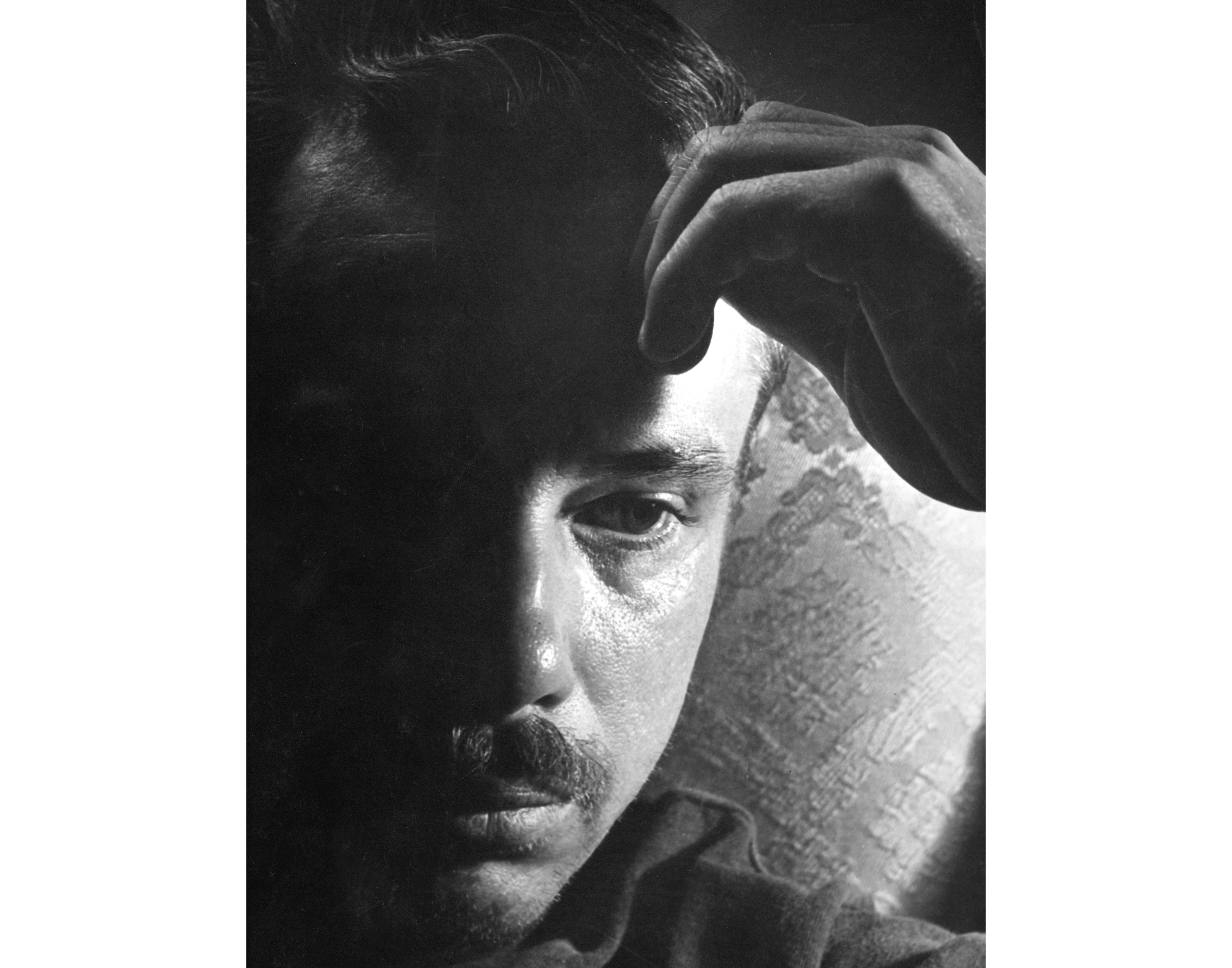
This piece actually got entered into a state art contest. It made it all the way up to second place at that level and one result was to change the mind of the head of the art department about the value of photography.
At the time this image was made, Dad posed for a lot of pictures. He was still working as a machinist. Hard, intense labor at the time. These were the days before numerical control machines. He had to do the calculations by hand, load the steel stock by hand, operate the machines by hand. He was immensely strong at the time. He’d come home covered in sweat and grime, shower, sit, eat dinner. And then ask what I’d been up to and did I need help with anything.
He has always been there ready to help. So what if he got the method wrong? It wasn’t all wrong and the results were nothing to complain about (at least, I hope not).
After getting out of the shop—because he was the only one to volunteer to take the training when the company he worked for bought their first numerical control lathe—he worked just as hard to ascend a management ladder and ended up head of an engineering department with nearly a hundred engineers under him. He built an entire factory from the ground up for a single project and came in under budget and ahead of schedule. He taught himself four computer languages and learned the complex ins-and-outs of procurement for an international corporation.
He was retired—asked to do so, offered a big bribe to leave—because, despite all this, he only had a high school diploma.
As I said, he’ll be 80 soon. Physically, he’s much diminished. But the mind is still as sharp as ever and he still challenges me. And once the stories and novels started appearing, he was not at all shy about bragging on my behalf. (“I don’t know much about this literary stuff,” he told me once, “but your mother does and she’s says you’re a damn good writer.” Which meant he thought so, too.)
I found this photograph recently, scanned it, cleaned it up a bit. I thought I’d share a bit about my dad. He was and is Something Else. I love him.
It’s June. A smidgen over a year ago (May 29th, 2009) Advance Photographics closed its doors and I have been unemployed since.
In that time I have written half of the sequel to my alternate history novel, Orleans, and a complete new novel, a murder mystery called The Drowned Doll. I’ve written blog posts for both here and Dangerous Intersection and occasionally for my MySpace page (which is getting more and more neglected in favor of Facebook, through which I can stream this blog). I wrote book reviews for a good chunk of 2009 until two of my review outlets basically dried up and went away.
I’m also now, as I’ve mentioned before, beginning to learn Photoshop in a meaningful way and toying with entering the vast realm of full digital photography.
Along with that I have continued to serve on the board of the Missouri Center for the Book and have become its president again as of this past March. My life is nothing if not bubbling with activity. None of which, however, is paying me a damn thing.
We bought a new bed. After nearly 30 years with a waterbed, age and comfort demand something else, so we replaced the king size freeflow with a high end Serta (queen size) and have thereby also gained much floor space in the bedroom, something we’ve been chafing over the lack of for some time.
Our stove finally died. With a great brilliant spark, the control panel for the ancient monstrosity announced forced retirement, so we must now buy a new stove. This is a mixed thing, both an occasion for celebration and a pain in the butt for the untimely expense. We’re also getting some painting done.
I had to repair the ceiling in my office.
I am attempting to write a new short story. I may have mentioned that some time in the last decade, since devoting myself almost entirely to novels, I’ve misplaced my ability to do them and now I wish to hunt that ability down and capture it again. I have a deadline, which helps somewhat.
Like so many today, my job prospects are dim. What I spent 35 years doing is an obsolete skill (traditional, wet process photofinishing). My admittedly impressive publishing oeuvre does not seem to impress people looking for editors or technical writers. My academic credentials, being nonexistent, limit me in terms of getting interviews. I am in a position wherein I must make my writing work. I must. I want to, there’s no question there, but with four completed novels currently unsold (due to factors of which I have no concept) and no ready ideas on how to move any of this forward, I’m in an awkward position. As each of the novels currently in circulation are attached to series, all of them will entail sequels when they sell. It would seem unwise for me to write yet another novel at this point.
So. I’m open to suggestions. Right now I’m going to go to the gym. Before I go, though, I thought I’d go ahead an post my resume. Just in case anyone may read this who may be interested.
Have a nice day.
____________________________________________________________________________________
Mark W. Tiedemann
P.O. Box 160160 St. Louis, MO 63116
mwtiedemann@earthlink.net
____________________________________________________________________________________
Strategic Planning               Communications
Organizational Development            Press Relations
Public Affairs & Presentation            Public Speaking
Staff Recruitment               Workshop Management
____________________________________________________________________________________
Participated in the determination of organizational policies regarding issues of program requirements and benefits, as well as longterm goals.
Organized public events, including speaker liaison, facilities, and scheduling.
Established relationships with other agenices and organizations to facilitate common goals.
Directed activities of professional and technical staff and volunteers.
Spoken to community groups to explain organizational goals, policies, and programs.
Recruited, interviewed, and hired or signed up volunteers and staff.
Represented organizations in relations with governmental and media institutions.
Prepared written presentations, including newsletter material, in support of organizational goals.
Oversaw board meetings, setting agenda, and directing input from members to facilitate optimum productivity, and establishing policies consistent with the achievement of organizational goals.
____________________________________________________________________________________
Published author since 1990. Ten novels, fifty-five short stories in various national publications, book reviews, occasional articles. Bibliography available on request.
Missouri Center for the Book (http://books.missouri.org) . Elected president in 2005, I have worked to revitalize the organization and have successfully increased its board membership, public visibility, and overseen the establishment of the new Poet Laureate position for the state of Missouri. Prior to becoming president, I developed and produced a variety of public programs for the organization.
Advance Photographics: 1997 to the present. Duties include all aspects of traditional photofinishing, with an emphasis on b & w processing, color printing, and copy work.
Self employed freelance writer: August 1995 to July 1997
Shaw Camera Shop: December 1975 to July 1995. Custom b & w photofinishing, all aspects, including lab manager from 1982 onward.
One of the challenges I’ve always confronted as a visual artist is the fact that the image I conceive in my mind rarely is matched by what I’ve been able to produce as an artifact. Some photographs I’ve made I have been inordinately proud of. The ones I’ve liked best are those that have emerged sans expectations. I’ve “seen something” and made the image, only to discover later, in the lab, what it was I saw. But by then, it’s changed, because memory plays fast and loose with reality, and the picture I ended up making was its own thing.
Disappointment usually followed when I preconceived something at the time the shutter snapped and later I just couldn’t get that perceived image out on paper.
I’ve been making my first forays in the digital realm and dipping my toe into Photoshop. There is so much control one has through this program that it’s potentially narcotic. One could become lost in the ability to change, alter, enhance, and distort endlessly.
Because I’ve done photography for as long as I have, I’m already putting the breaks on in terms of Out There exoticism. But I’m finding the ability to bring an image more into line with what I originally conceived (or what I am imagining at the moment of manipulation) to be…wonderful.
For instance:

The original capture was a vertical shot. I “saw” something in this otherwise ordinary stand of trees. Cropped close, horizontal now, and manipulated for color saturation and contrast, I have something approaching that initial perception. The ethereal rendering or what might be termed timelessness in the forest is a direct result of what I’ve been able to do in Photoshop.
This is very cool as far as I’m concerned. This could be much fun.
We started cleaning the garage this weekend past. Made a lot of headway. We tackled boxes which we haven’t touched since we moved in, almost 19 years ago. Time flies when you have other things to do.
This morning I continued. There were a few boxes of assorted odds and ends that I needed to cull through. In doing so, I found this photograph.
Donna has only seen me without a beard once. She didn’t like the effect, mainly because int he years during which I’d had a beard I somehow misplaced my chin. Anyway. This was back when I was a trim young fella on the make, as it were.
The historical context of this photograph is rich. Firstly, it is the young me. That’s about as interesting as that gets. Secondly, the setting. Shaw Camera Shop. 4468 Shaw Avenue, St. Louis. It had been in business since the late Forties and it was, hands down, my favorite job. I was the lab tech and later lab manager. I worked there for 20 years, made fast friends (many of whom are gone) and played out some of the great dramas of my life partly within its confines. It was a black & white custom lab and at its peak we were doing the printing for several color labs, most of the independent camera stores in St. Louis (of which almost none remain) and three of the local yearbook companies. Lots of pictures. This shot shows me behind the front counter, the film cabinet behind me.
Thirdly, the print itself is of modest historical interest. It was shot on Kodak Instant Print film. There was a time when Polaroid held the monopoly on that kind of technology. You wanted to take pictures without bothering to send the film to a lab, you used Polaroid. Kodak muscled in while Polaroid suspended production during a strike. They—Polaroid—subcontracted the manufacturing to Kodak till the strike ended. During that time, Kodak got a chance to really take Polaroid’s process apart and a year or so after Polaroid resumed production, Kodak announced a new product—instant print film. They claimed it was all their own. Polaroid sued. And won. So this print is an example of a short-lived phenomenon. (It wasn’t very good—I’ve put some effort into making this one easier to look at and sharper, but there’s only so much you can do.)
Shaw Camera Shop is long gone. The owners for whom I worked, who I loved like a second family, had problems—Earline had battled cancer for decades and finally lost and Gene just didn’t want to continue anymore. I was just beginning my writing career and knew if I bought the business I’d have to give that up. So Gene sold it to someone who was ill-suited to running it and he ruined it.
Today, the building houses an antique store, Gringo Jones. Last year was the first time I’d set foot in the place since a few weeks after it closed up as a lab. The new owners pretty much gutted the interior to suit their needs, but I could still walk unerringly through to where everything had been. I doubt I’ll do that again, though.
Anyway, it was a pleasant surprise to find this. I have other pictures of Shaw and myself from that time. I didn’t, of course, realize just how much I liked that job until it was gone. But the memories are still there.
It’s Tuesday.
I spent a good deal of yesterday cleaning house, catching up on necessary but boring details, and talking to someone about photography. Check this out. Very nice work and Jennifer is very knowledgeable. I put a permanent link to her site on the sidebar over there on the right.
Digital. It has changed more than the way we write, get news, or play.
In the midst of all this, I may have neglected to report here that I am once more president on the Missouri Center for the Book. I suspect there is a bit of masochism involved in this, although on whose part I’m not prepared to speculate. Tomorrow I head back to the state capitol, Jefferson City, to participate in the Letters About Literature Awards. This year is an especially good one for Missouri because…
…we have a national winner in this year. Imani Jackson, a 6th grader at Lewis and Clark Middle School in Jefferson City, was chosen as a National Honor Winner in Level I, for her letter to Maya Angelou about the poem Phenomenal Woman. This is a big deal. This program is now in all 50 states and often the number of letters tops a thousand in a given state, sometime going to two thousand or more. Nationally, two Winners and four National Honor Winners are chosen at each level, in addition to the state awards. Imani will receive a $100 Target gift card and a $1,000 grant for the library of her choice as a prize.
In the last couple of years some of the data coming out of studies concerning reading has been startling and encouraging. Sharp rises, even among those demographics often seen as “troublesome.” People in general are reading for pleasure more, and a lot of young people are. One might jokingly quip about Twilight and Harry Potter being the main cause of the jump, but I don’t think so. Those books may be “gateway” books. The thing is, these levels are sustained.
So I’m entering this last year of my participation in the Center with some optimism that the work we do, collectively, is having an effect. (Yes, this is my last year—our by-laws require board members to leave after nine years, and for me that’s next spring.) What I’m hoping to achieve this year is to get into place all the things I’d wanted to do last time. Independent funding, the new website, maybe begin a new membership program, and solidly establish the annual Celebrations so they can grow into a state book fair. We’ll see.
It would be helpful if I could get a book sold in the meantime…